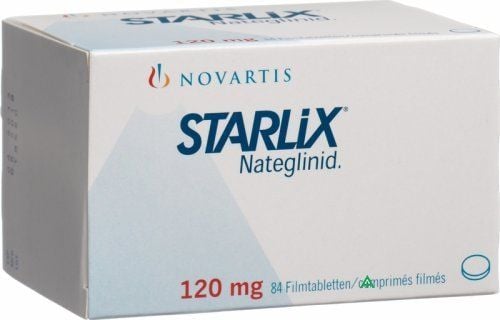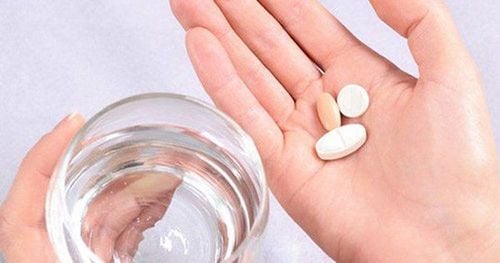This is an automatically translated article.
Current measures to replace heart valves can bring high efficiency in treatment, improve symptoms of shortness of breath, fatigue ... in people with heart valve disease. However, how long to live after heart valve replacement depends on many factors such as: the type of heart valve used, the body's response to the new heart valve, ...
1. What is the structure and function of the heart valve?
Heart valves are soft, thin leaves, composed of connective tissue surrounded by endocardium. Heart valves regulate the direction of blood flow in a certain direction.
A normal heart has four main types of heart valves, including:
Tricuspid valve: The valve located between the right atrium and right ventricle, has the role of bringing blood one way from the right atrium to the right ventricle. Pulmonary valve: Consists of three small bird's nest-shaped valves, located between the right ventricle and the pulmonary artery. Blood flow from the right ventricle through the pulmonary valve into the pulmonary artery carries blood to the lungs for the purpose of oxygen exchange. Mitral valve: The valve located between the left ventricle and the left atrium, has the role of transporting blood in one direction from the left atrium to the left ventricle. Aortic valve: Located between the left ventricle and aorta, blood flows from the left ventricle through the aortic valve into the aorta, bringing blood to the whole body. The heart valves have a very important role in coordinating the direction of blood flow in a certain direction, controlling the flow of blood through the heart by opening and closing each time the atria and ventricles contract. The opening and closing functions of such valves are controlled by the pressure difference between the chambers of the heart.
2. When to replace the heart valve?
Aortic stenosis: When the aortic valve narrows so much that the blood flow that the left ventricle pushes into the aorta is blocked. The left ventricle needs to work harder to pump blood out, leading to left ventricular hypertrophy, causing decompensated heart failure. If the aortic valve stenosis is mild - moderate, the patient can be treated with drugs and periodically follow-up, while in the case of severe aortic valve stenosis, the patient needs intervention with aortic valve replacement. percutaneous or surgical valve repair, heart valve replacement. Aortic regurgitation: The aortic valve does not close tightly, causing blood flow from the aorta to return to the left ventricle, causing the left ventricle to dilate, increasing pressure on the left heart, also causing long-term condition. heart failure. People with severe aortic valve regurgitation, with symptoms such as chest pain, dyspnea and echocardiography showing left ventricular dilatation, reduced EF ejection fraction, should be indicated for valve repair or replacement. Mitral valve stenosis: The mitral valve is much narrowed, making it difficult for blood from the atrium to go down to the left ventricle, so blood is partially blocked in the left atrium, increasing left atrial pressure causes the left atrium to dilate. As a result, increased pressure in the lungs makes it difficult for patients to breathe, causing symptoms of asthma, acute pulmonary edema, atrial fibrillation, arrhythmia, blood clot formation, and stroke. Patients with mitral stenosis can be intervened with percutaneous balloon dilatation. In case the patient is tight with mitral regurgitation or the leaflets are too thick and calcified, the doctor will prescribe mitral valve replacement. Mitral regurgitation: The mitral valve does not close tightly, causing blood flow from the left ventricle to back up into the left atrium. At that time, the left ventricle works harder to ensure that blood is pumped to the body, leading to left ventricular dilatation, consequent heart failure. Patients with severe mitral regurgitation with symptoms of heart failure (dyspnea on exertion, severe dyspnea even at rest) or on echocardiography with reduced ejection fraction should be replaced or repaired. heart depending on the condition of damage to the valve and the system of ligaments and muscle columns in the heart valve.
3. How long does an artificial heart valve last?
Patients after valve replacement, the life of the heart valve, the patient's life expectancy will depend on factors such as: What type of valve is used to replace, the patient's health status, other diseases associated with the valve replacement. follow, treatment methods, etc. Therefore, it is difficult to give an exact time period for this question. However, patients with heart valve replacement can completely prolong their life and live as healthy as normal people if the patient has a scientific and appropriate self-care method.
3.1. Regular health check-ups After being discharged from the hospital, patients will be scheduled to see when they will be re-examined at specialized cardiology facilities. Patients need to regularly follow the doctor's appointment so that the doctor can check your medication regimen and find the right dose for the patient. Before going to the doctor, you can bring the medical examination book, the prescription you are taking so that the doctor can easily monitor.
3.2. Diet Nutrition in each meal is very important for recovery after surgery. After heart valve surgery, patients should limit their intake of salt and foods containing a lot of salt (salted tomatoes, pickles, dried fish, canned foods, fast foods,...), and should also supplement with other foods. green vegetables in your meals. Patients should try to build a menu with a balanced ratio of meats, fish, vegetables for each meal. If needed, the patient can see a nutritionist for more information on the right diet for your body.
3.3. Exercise regime Since you are still in the hospital, you should move like rolling back in bed, then you can walk in the room or in the hallway depending on your strength. Your exercise needs attention to ensure that the heart does not have to work too hard. Through gradually increasing physical activity each day, it will help you to improve your quality of life better, avoid many complications when lying down for a long time (ulcers, blood clots,...)
Within 6 to 8 Weeks after surgery, you should not lift or push anything heavier than 50kg. That will help avoid putting pressure on the healing incision and ensure enough time for the sternum to heal.
Patients take an average of 4-6 weeks for their health to return to normal. Your breastbone will then heal completely. Some people are able to return to desk jobs about 4 weeks after surgery. For workers with higher intensity, they need to rest for at least 6 weeks before returning to work. The treating doctor will let you know when the patient's health has fully recovered.
Some cases still have heart failure after the surgery, the patient cannot return to the previous job. These people need career counseling to find a job that is suitable for their current health.
3.4. Medicines used after surgery Patients should only take medicine according to the prescription of the treating doctor. Patients are not allowed to arbitrarily take any more drugs, unless prescribed by a specialist. Some commonly used drugs are:
Anticoagulants
Regular use of anticoagulants for the purpose of preventing thrombosis due to artificial heart valves. Anticoagulants (coumarin/warfarin) should be monitored regularly with PT and standard INR testing. The doctor will prescribe the drug or adjust the dose for the patient to maintain this value within the appropriate range.
Patients need to follow the instructions on the use of the drug carefully, take the medicine exactly as prescribed. Medicines need to be taken at the same time every day and at the same time to avoid missing doses. If the patient misses a dose, contact your treating physician for instructions and do not double the dose the next day.
In addition, the doctor performing the procedure or your dentist also needs to know the anticoagulant that the patient is taking. If you need immediate surgery or surgery, you may need to temporarily stop anticoagulation during surgery or for as long as your doctor recommends to prevent bleeding during surgery due to decreased hemostasis. blood.
Antibiotics
Before having oral procedures (tooth extraction, tartar removal, ...) or any other probe or procedure that can cause bleeding, the patient should be given antibiotics first and after the procedure for the purpose of preventing infection. Because during the procedure, bacteria, fungi, ... can enter the blood from the outside, follow the circulatory system to the heart, attach to the structures in the heart, especially the heart valves. and cause a very serious infection of the heart, which is infective endocarditis. The use of antibiotics is also the prevention of this infection.
4. Is replacing the heart valve dangerous?
Mechanical Heart Valves Mechanical heart valves are artificial valves made from long-life materials such as metal, carbon, ceramic and plastic. The mechanical valve has the advantage of a very long life, however, because the mechanical valve is made of metal (foreign foreign body), the valve can activate the blood clotting process in the body and form thrombus sticking to the valve and cause valve stenosis. To prevent this complication, patients must take long-term anticoagulation to maintain an appropriate coagulation index. Virtually all patients who undergo mechanical valve replacement are on lifelong anticoagulation and regular screening is important when taking anticoagulants. The purpose of taking the drug is to ensure that the patient's blood clotting level is within the allowable limits, to prevent blood clots from forming, and not too much to cause complications due to taking the drug (hematoma, bleeding).
Before performing valve replacement surgery, your surgeon will decide which valve is right for you based on your professional experience and the specific medical condition of the patient. The following factors are the basis for the surgeon to choose, including: The patient's age, valve size, ability to adhere to treatment, financial ability, whether the patient is pregnant or wants to have a baby or not. ,...
Biological heart valve This is a valve taken from the heart of an animal (a heterogeneous valve) that has been processed to remove components that cause transplant rejection for the patient and is partially repaired. They are placed on a metal or plastic support so that they can be placed on the body easily.
There is another type of biological valve that uses valve tissue taken from an organ donor (allogeneic valve), and this valve is often substituted for aortic valves.
Biological valves have the advantage that the valve leaflet is similar to the heart valve of the patient who has undergone valve replacement. That is the reason that the patient will not need to use long-term anti-rejection drugs such as mechanical valves, the duration of anticoagulation after valve replacement surgery is shorter (usually about 6 months after surgery). However, the disadvantage of biological valves is that the lifespan is not long because the process of degeneration can take place, the average life of the biological valves can be maintained from 8 to 10 years.
Hope the above information will provide more information about heart valve replacement for readers. Patients after heart valve replacement can go to Vinmec General Hospital for periodic health check-ups and consultations by specialists with many years of experience.
Please dial HOTLINE for more information or register for an appointment HERE. Download MyVinmec app to make appointments faster and to manage your bookings easily.













